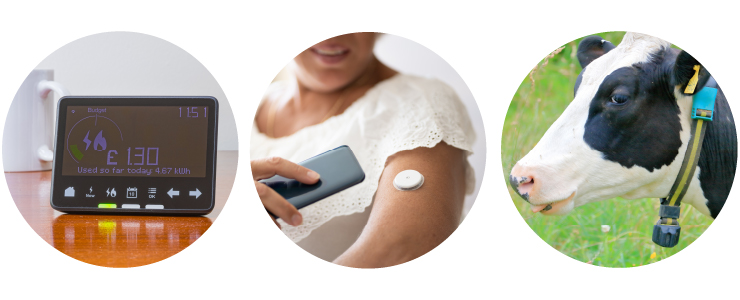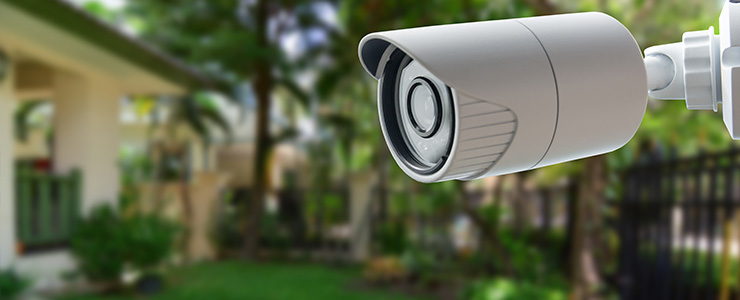In the ever-evolving realm of wireless communication, LTE-M has emerged as a pivotal player, heralding a new era of connectivity tailored specifically for the Internet of Things. As businesses and industries increasingly leverage IoT devices to streamline operations and enhance efficiency, understanding the intricacies of LTE-M becomes imperative.
Are you curious about LTE-M and its applications? Do you find yourself grappling with questions about its compatibility, speed and overall functionality? You’re not alone. In this blog, we embark on a journey to demystify the six most frequently asked questions surrounding LTE-M. Let’s navigate the wireless landscape together and uncover the key elements that make LTE-M a transformative force in the age of connectivity.
1. What is LTE-M?
LTE-M (Long-Term Evolution for Machines), is a wireless communication standard designed to facilitate efficient and low-power connectivity for devices within the Internet of Things (IoT) ecosystem. It operates on existing LTE networks and provides a reliable and cost-effective solution for a wide range of IoT applications. Specifically optimised for devices that require extended battery life, improved coverage in challenging environments and support for massive device deployments, LTE-M is a crucial technology in the ever-expanding landscape of connected devices.

2. What is an LTE-M network?
Tailored for IoT applications, LTE-M is a specific variation of LTE. LTE-M and LTE (Long-Term Evolution) are related but distinct technologies within the wireless communication landscape.
LTE, often referred to as 4G LTE, is a standard for high-speed wireless communication for mobile devices such as smartphones and tablets. Compared to other technologies, LTE-M provides faster data speeds, lower latency and improved network capacity.
On the other hand, LTE-M is optimised for devices that require lower power consumption, extended battery life and better coverage in challenging environments. It is particularly suitable for a wide range of IoT use cases, including applications like asset tracking, smart meters, healthcare monitoring and industrial automation.
3. What is LTE-M connectivity used for?
The characteristics of LTE-M, including low power consumption, enhanced coverage, and support for massive device connectivity, make it well-suited for applications that require long battery life, reliable communication in challenging environments, and scalability for large-scale IoT deployments.
- Asset Tracking
LTE-M enables efficient tracking and monitoring of assets such as vehicles, containers and goods. Its extended coverage and low-power features make it suitable for applications that require real-time location updates.
- Smart Meters
Utilities leverage LTE-M to connect smart meters for electricity, water and gas. This allows for remote monitoring, management and data collection, enhancing efficiency in resource management.
- Healthcare Monitoring
LTE-M is employed in healthcare applications for remote patient monitoring and tracking of medical equipment. It facilitates the secure transmission of health data while preserving battery life in wearable devices.
- Industrial Automation
Industries use LTE-M for monitoring and controlling equipment in remote or challenging environments. It supports the connectivity of a large number of devices, making it suitable for industrial IoT deployments.
- Environmental Monitoring
LTE-M is utilised for environmental monitoring solutions, including weather stations, air quality sensors, and other monitoring devices. Its reliable connectivity ensures timely data transmission for informed decision-making.
- Smart Agriculture
LTE-M supports agricultural applications such as precision farming, crop monitoring and livestock tracking. It enables farmers to gather data remotely and make data-driven decisions for better crop yield and resource management.
- Home Automation
To enable smart homes, LTE-M can be used for connecting various IoT devices, such as smart thermostats, security cameras and sensors, providing homeowners with remote control and monitoring capabilities.

4. What is LTE-M and NB-IoT?
While both are Low Power Wide Area Networks, LTE-M and NB-IoT (Narrowband Internet of Things) stand out as distinct technologies. Here are the key differences between NB-IoT and LTE-M:
Data Rates
- NB-IoT is designed for applications with low data rate requirements. It typically operates at lower data speeds, making it suitable for IoT devices that need to transmit small amounts of data infrequently.
- LTE-M supports higher data rates compared to NB-IoT. It is optimised for applications that require moderate data transfer speeds, providing a balance between data speed and power consumption.
Latency
- NB-IoT tends to have higher latency compared to LTE-M. This means that the time it takes for data to be transmitted between devices may be slightly longer.
- LTE-M offers lower latency, making it more suitable for applications that require real-time or near-real-time communication.
Power Consumption
- NB-IoT is known for its low power consumption, making it suitable for devices that need to operate on battery power for extended periods.
- LTE-M is also designed for low power consumption but may not achieve the same level of power savings as NB-IoT. It strikes a balance between data speed and power efficiency.
Frequency Bands
- NB-IoT operates in narrow frequency bands, allowing for efficient use of the radio spectrum. It is optimised for long-range communication with a focus on spectral efficiency.
- LTE-M can use a wider range of frequencies compared to NB-IoT, offering flexibility in deployment.
5. What is the difference between LTE-M and LTE Cat-1 connectivity?
LTE-M and LTE Cat-1 (Category 1) are specialised variants within the LTE standard, strategically crafted to meet the unique demands of the IoT. Crucial distinctions exist between LTE-M and LTE Cat-1. Firstly, in terms of data rate, LTE-M is tailored for applications with lower data requirements, typically around 375 kbps, optimising communication for IoT devices with moderate data transfer needs. In contrast, LTE Cat-1 offers higher data rates, ranging from 1 Mbps to 10 Mbps, catering to IoT applications that demand relatively faster speeds.
Secondly, regarding power consumption, LTE-M boasts significant energy efficiency, ideal for devices requiring extended battery life. LTE Cat-1, while more power-efficient than traditional LTE, strikes a balance between data speed and power consumption.
Additionally, LTE-M is cost-effective, making it a preferred choice for large-scale IoT deployments, while LTE Cat-1, with slightly higher deployment costs, suits applications requiring moderate to higher data rates.
Finally, in coverage and range, LTE-M excels in challenging environments, offering enhanced coverage and penetration, while LTE Cat-1 provides reliable coverage but may not match LTE-M’s performance in such conditions.
In essence, the choice between LTE-M and LTE Cat-1 hinges on the specific needs of the IoT application or device, considering factors like data speed requirements, power consumption, and deployment costs.

6. What is the difference between LTE Cat-1 and LTE Cat-1 BIS connectivity?
LTE Cat-1 BIS is a specialised version of LTE. It is tailored for IoT applications and utilises existing LTE networks. Notably, Cat-1 BIS stands out by operating seamlessly with just a single antenna, diverging from LTE Cat-1, which mandates IoT devices to feature dual antennas. This design choice offers clear advantages, allowing LTE Cat-1 BIS devices to be more streamlined and straightforward in their design compared to LTE Cat-1 devices.
Conclusion
In conclusion, exploring LTE-M’s intricacies reveals its pivotal role in shaping IoT connectivity. From fundamentals to differences with LTE Cat-1 and its dynamic relationship with NB-IoT, LTE-M transforms diverse IoT use case. For various scenarios such as local deployments within cities, regions, or countries, NB-IoT or LTE-M may be preferable due to lower hardware costs and enhanced battery life. However, international deployments demand meticulous planning for coverage. NB-IoT and LTE-M both have fragmented coverage around the globe. All standard 4G netwoks support LTE Cat-1 and LTE Cat-1 BIS.


